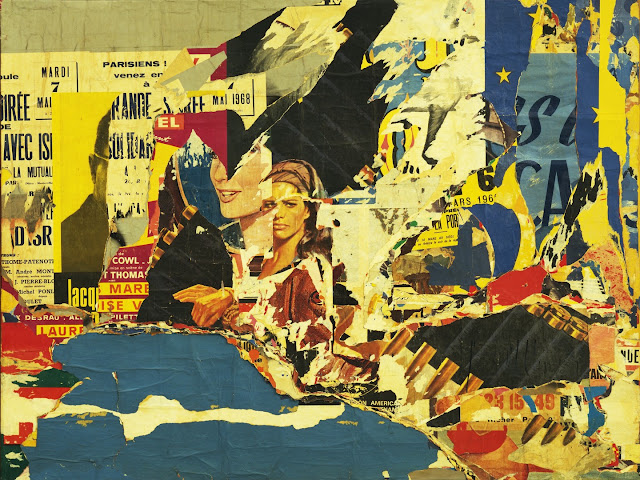The Maximal Sixties: Pop, Op, and Figuration | The Museum of Modern Art
This small and peculiar exhibition features a mix of works by great and lesser-known artists in three genres, aimed at representing the scenario of adversarial art philosophies in the 1960’s. It functions as a barometer of taste for that era, ranging from the Pop and Op movements to Figuration—all of which, as the show’s curator states, constitute “the flip side of Minimalism’s reductive abstraction and visual austerity.”
The first room contains Op Art, which is represented by Bridget Riley, Joseph Albers, Lee Bontecou, and Takis. These works possess a strong sense of mediated effect laboriously absent in the other genres. I was drawn to a sculpture by Takis, which functions as a sort of physically realized drawing. Of all the Op artists’ work, Riley’s fades most consistently into a miasma of whiter space, somewhere between the image, our eye, and our mind.
The second room is devoted to Pop Art, and includes minor works by a number of big name personalities, including Andy Warhol, Claes Oldenburg, and Tom Wesselman, but also work by Peter Blake, Jean Tinguely, Arman, Christo, Jacques de la Villegle, and Eduardo Paolozzi. I particularly enjoyed the work of certain artists with whom I had only a passing acquaintance: the large scale conglomeration of street advertisements by Villegle (“122 rue du Temple”), the collages of Paolozzi (the “Universal Electronic Vacuum” series), and the pen work of Peter Blake called “Little Sonny Summer” which recalls the Watts riots of 1968.
The last room is devoted to Figurative works by artists who work within, but are not exclusively of the genre. Included here are pieces by David Hockney, James Wyeth, R.B. Kitaj, and Gilbert and George. This part of the exhibit is the most prosaic and least studied, displaying small works by Kitaj and Hockney, most of them portraits which exhibit the structural motifs of their respective oeuvres. The most prominent piece in the room is a towering Gilbert and George, To Be With Art is All We Ask, composed of a multitude of charcoal and wash drawings.
The exhibition, for the most part, is successful. But it suffers from one flaw, which is the conspicuous lack of narration provided to contextualize all three movements—something that would have been there given the presence of pieces by the Minimalist practitioners the show decries in the first place.
THE EXHIBITIONIST Issue One, April/May 1997.



Comments